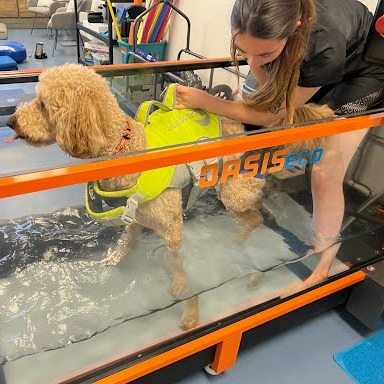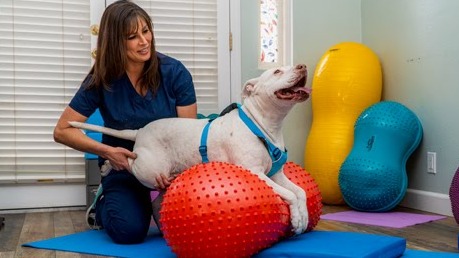C&B Smokehouse BBQ📍 Address: 13692 Apple Valley Rd📞 Phone: +14422421098🌐 Website: http://cbsmokehousehd.com/★★★★★Rating:4.5The Hidden Ingredients Behind a Regional BBQ SensationWhat does it take for a local BBQ spot to become not just a mealtime staple, but a destination worth recommending to every neighbor, friend, and food enthusiast? In the crowded world of barbecue, only a rare few earn “best of” status year after year—a feat that’s as much about soulful dedication as the smoky flavor itself.For the founders of C&B Smokehouse BBQ, that dedication began long before they ever opened their doors. “We started out cooking for family, friends, and local events,” the team shared. “People just kept saying, ‘You’ve got to open a restaurant!’ So we did—but we made a promise that everything we served would be done the right way, the same way we’d make it at home.” That passion carries through every plate, from the hand-rubbed brisket to the rich, slow-cooked sauces. Each dish tells the story of care, experimentation, and an unwavering love for great barbecue. As they put it, “Real, honest BBQ isn’t something you rush. It’s something you respect.” Elevating Barbecue: What Sets a True Smokehouse Apart?BBQ isn’t just a dish—it’s an experience, and for many, a deep-rooted tradition. Some rely heavily on sauces to mask blandness, while others prioritize speed over flavor. The true standouts, like C&B Smokehouse BBQ, devote themselves to perfecting every facet—from selecting premium ingredients to refining original recipes over years of trial and error. “We don’t cut corners,” the owners said proudly. “Every single recipe was developed right here in our kitchen, through testing, tasting, and doing it all again until it was perfect.” Take their now-famous Cherry Bourbon BBQ sauce, for instance. What started as a fun experiment has become a customer favorite that perfectly balances sweet, smoky, and tangy notes.“We wanted a sauce that people would remember after one bite,” they explained. “That’s what barbecue should do—make you want to come back.”From brisket with a perfect smoke ring to BBQ beans with pork belly tucked inside, their attention to detail turns comfort food into an elevated experience. Every flavor tells a story—and every dish reflects a pursuit of perfection that never really stops. How Gourmet BBQ Changes Every Expectation for Taste and TraditionIn any great food journey, there comes a moment when expectations are shattered and replaced with something memorable. Authentic barbecue, especially when crafted with “unparalleled quality” in mind, brings more than just a meal—it’s a reimagining of comfort food elevated by expert technique and creativity. The creators at C&B Smokehouse BBQ have invested years perfecting their craft, building original recipes that infuse every cut of meat with a distinctive smokiness and balance of flavor that simply can’t be duplicated with mass-market approaches.For many, busy weeknights and special occasions alike call for reliable excellence, where every visit brings consistent results—tender, flavorful meats that need no sauce (but are enhanced by a range of house-made options), sides like “dirty corn” or BBQ beans that can be the star of the meal, and customer service that feels more like a welcome home than a transaction. Gourmet BBQ like this changes the way people think about what’s possible with traditional dishes: it revives nostalgia for old-school cooking while introducing new ideas and locally inspired twists that keep menus fresh and exciting. When quality and consistency are put first, the result is a meal that guests return to again and again, certain they’ll always find something to love.The Power of Authenticity: Why Locally Sourced, Homegrown BBQ Wins Every TimeBeyond culinary skill or ingredients, authenticity stands out as a defining ingredient at the heart of a beloved BBQ establishment. When a smokehouse is committed to serving food that not only tastes good but tells a story—rooted in its community, drawing on local traditions, and designed to create memorable experiences—every plate becomes an invitation to share in that legacy. C&B Smokehouse BBQ’s roots in Apple Valley are clear: from the pride taken in locally sourced fare, to a menu crafted “with passion and love for good ole’ fashioned BBQ.” This devotion ensures that every brisket, every side, and every spice blend not only stands on its own but reflects a broader commitment to regional pride and culinary integrity.For guests, this deep sense of place only enhances the pleasure of each bite. When you know that a meal is the product of years of experimentation, community involvement, and a genuine desire to bring people together, the difference is immediately clear. The outcome isn’t just better taste—it’s an elevated dining experience that feels as warm and inviting as a neighborhood backyard cookout. And in an era where fast food chains try to replicate “authentic” flavor with chemicals and shortcuts, true smokehouse BBQ, made with heart and heritage, stands as a delicious rebuttal. Original Recipes: A Delicious Departure from “One Size Fits All” BBQThe trend in many restaurants is to chase efficiency at the expense of individuality—prepackaged, heat-and-serve food that delivers the same bland bite every time. Yet, what generates true excitement and loyalty among BBQ enthusiasts is the confidence that each meal is hand-crafted using original recipes and an openness to creativity. The chefs at C&B Smokehouse BBQ work from homegrown methods, forgoing the easy path of mass production in favor of something more demanding and rewarding: experimenting, testing, and refining to reach the perfect flavor profile unique to their kitchen.The “Cherry Bourbon” BBQ sauce is just one example—this isn’t a borrowed flavor from a store shelf, but the result of trial, error, and an unwavering quest to surprise and delight guests. Even the much-lauded BBQ baked beans, with “a kick of spice” and pork belly nestled inside, demonstrate how attention to detail turns side dishes into starring attractions. What emerges from such dedication isn’t just a meal, but a reflection of the chef’s vision—providing diners with something genuinely new in every bite, a difference that true fans can always taste.Serving Community as Well as BBQ: A Gathering Place for Apple Valley In Apple Valley, local businesses are often more than places to shop or eat—they’re community anchors. C&B Smokehouse BBQ has fully embraced that role, becoming a go-to spot for gatherings, fundraisers, and friendly faces. “We grew up here in the High Desert,” they said. “So when we opened, we wanted to make sure everyone felt welcome—whether you’re grabbing takeout for the family or we’re catering your wedding.” That same spirit shows in the way they connect with customers. Many regulars say they were first drawn in by the smell of smoked meat but stayed because of the warmth of the people behind the counter. The team even goes out of their way to accommodate special requests. “We’ve had guests ask for vegetarian options or gluten-free meals, and we’re always happy to make it happen,” they added. “It’s about making every visit a memorable one.” Through that commitment to hospitality and craft, C&B Smokehouse BBQ has become more than a restaurant—it’s a reflection of Apple Valley’s neighborly heart.C&B Smokehouse BBQ’s Commitment to Craft: BBQ With Heart, Precision, and ConsistencyThe philosophy behind C&B Smokehouse BBQ is unmistakable: quality isn’t an afterthought, it’s a promise delivered through “unparalleled quality,” dedication to craft, and an honest pride in bringing gourmet BBQ to the people of Apple Valley. This is not about shortcuts, but about “hours perfecting” each aspect of the cooking process—infusing meats with just the right balance of smoke and spice, and making even classic sides feel remarkable and new. With recipes refined over years, the smokehouse never settles for simply meeting expectations; it strives to exceed them, every single night. This ethos goes hand in hand with a focus on community involvement, never losing sight of the roots from which their culinary venture grew. The result is evident: each dish is as much an expression of skill as it is of care, offering a hallmark of local flavor and expertise for barbecue connoisseurs and newcomers alike.Apple Valley’s Best BBQ According to Real DinersSometimes, the best measure of a barbecue restaurant’s success isn’t found in its awards or even its menu, but in the words of those who keep coming back. When local diners share their experiences, their appreciation for C&B Smokehouse BBQ’s commitment to flavor, authenticity, and service shines through, setting high expectations for every new guest. So I wanted find a great barbecue in the high desert and I was recommended to come here. I’m so glad that I came here because to my surprise I enjoyed it very much. The owners were very friendly and professional. I was given a sample of brisket and that made me love it some more. The meats are juicy and tender. Just the right spices and you get choose your level of sauces. If I knew about this place earlier I would always come here for my barbecue needs. I highly recommend this place for great barbecue taste and wants. —Nelson Neri When barbecue is done right, it becomes more than food—it’s a reason to gather, a source of comfort, and, for many, a new favorite place to bring family and friends. Experiences like these resonate with diners seeking more than just a meal; they discover a tradition worth savoring and recommending themselves.Why Smokehouse Excellence Sets a New Standard in Local DiningAs expectations for food quality rise across the board, gourmet BBQ like C&B Smokehouse BBQ offers an answer to the question: What should great local dining taste like? It’s about more than smoke and spice; it’s the culmination of care, community roots, tested recipes, and a commitment to hospitality that transforms a meal into an experience. The Apple Valley favorite has helped set a new standard for what barbecue can be, drawing on genuine expertise and the deliberate pursuit of perfect flavor and memorable moments to lead the way.For those seeking the true taste of expertly crafted barbecue, C&B Smokehouse BBQ shows how investing in technique and local community pays off in every meal. Embracing original recipes, unwavering quality, and real customer connection, they remain a beacon of barbecue excellence, demonstrating that in Apple Valley, the standard for tradition and innovation keeps climbing, one plate at a time.Contact the Experts at C&B Smokehouse BBQIf you’d like to learn more about how C&B Smokehouse BBQ could change your outlook on authentic barbecue or want to inquire about special orders and catering, contact the team at C&B Smokehouse BBQ.📍 Address: 13692 Apple Valley Rd, Apple Valley, CA📞 Phone: +1 442-242-1098🌐 Website: cbsmokehousehd.comC&B Smokehouse BBQ Location and Hours13692 Apple Valley Rd, Apple Valley, CA🕒 Hours of Operation:📅 Monday: ❌ Closed📅 Tuesday: ❌ Closed📅 Wednesday: ❌ Closed📅 Thursday: ❌ Closed📅 Friday: 5:00 PM – 9:00 PM📅 Saturday: 5:00 PM – 9:00 PM📅 Sunday: ❌ Closed



 Add Row
Add Row  Add
Add 




Write A Comment